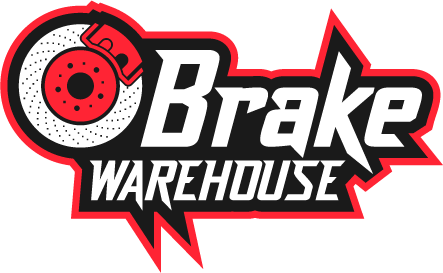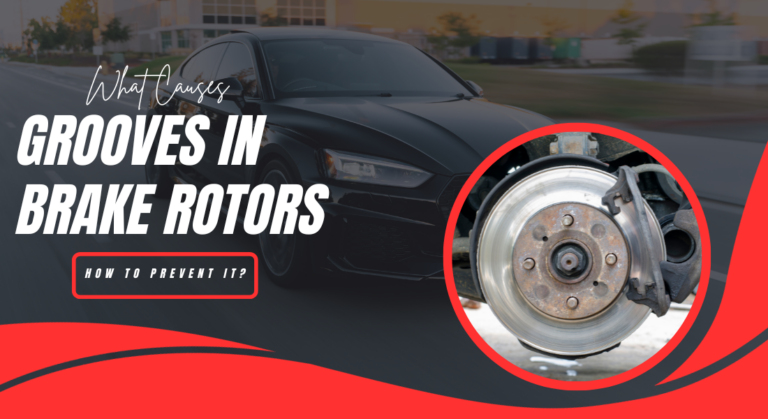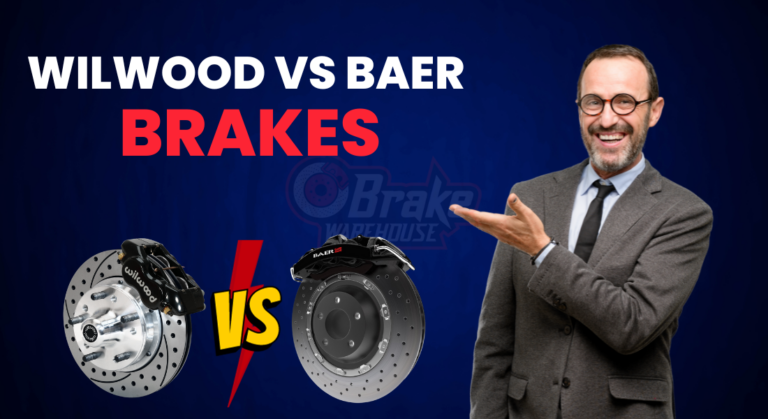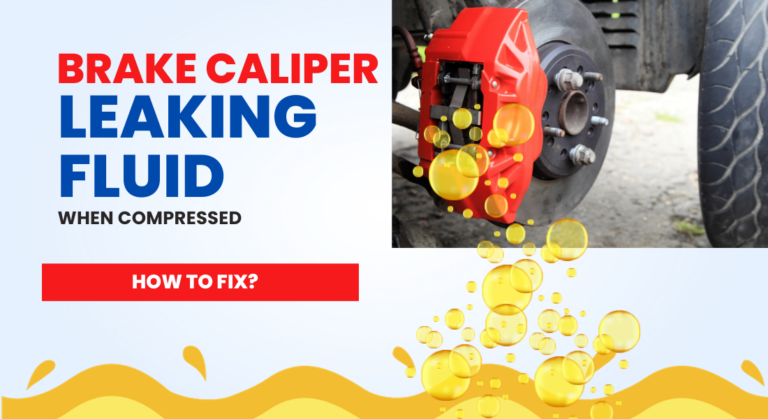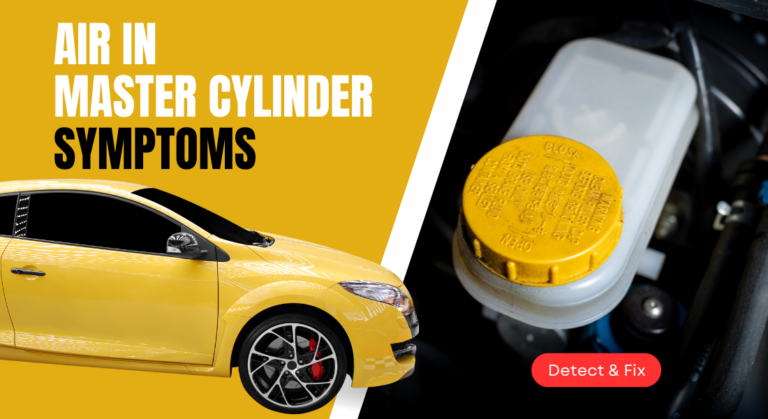Air In Brake Lines Will Cause What Type Of Problems?
Brake lines use hydraulic brake fluid to transmit pressure from the brake pedal to the wheels. And the braking system operates at an average pressure of 60 psi for efficient braking.
The quality of the brake fluid determines the efficiency of the braking system. But the air in the brake lines reduces the braking efficiency since air is compressible, thus increasing your car’s braking distance. It’s, therefore, essential to eliminate air in the brake lines and prevent air from building up in the system.
This guide will discuss the main problems caused by air in brake lines and the possible ways of eliminating air in the braking system.
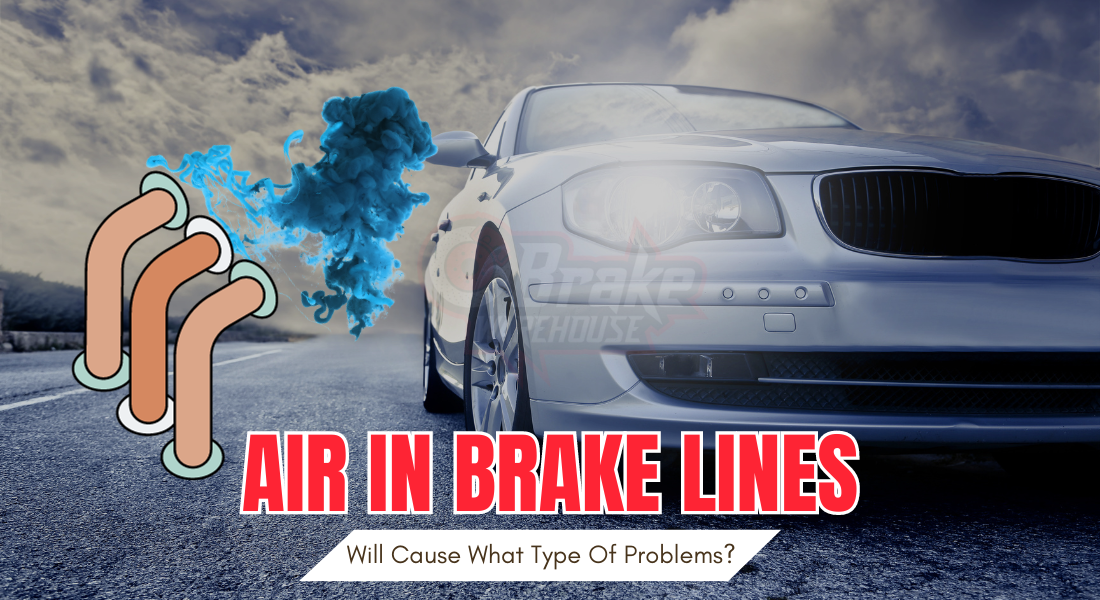
Air In Brake Lines Will Cause What Type Of Problems/Symptoms
Air in the brake lines affects the efficiency of the hydraulic system since air can be compressed when acted upon by high pressure. And air creates pockets along the system that causes the following problems.
- Spongy brakes
- Long stoppage distances
- Inefficient brakes
- Reduced brakes performance quality
- The brake pedal fails to return to rest position on release
- Brake fluid leakages
- Possible bursting of the braking system
All these problems must be detected in advance to rectify them before they cause further damage. Air should be eliminated from the system regularly to avoid such issues.
Air In Brake Lines Symptoms – Detailed Explanation!
Let’s look at these problems as they help determine the correct mitigation measure to take once detected.
1. Spongy Brakes
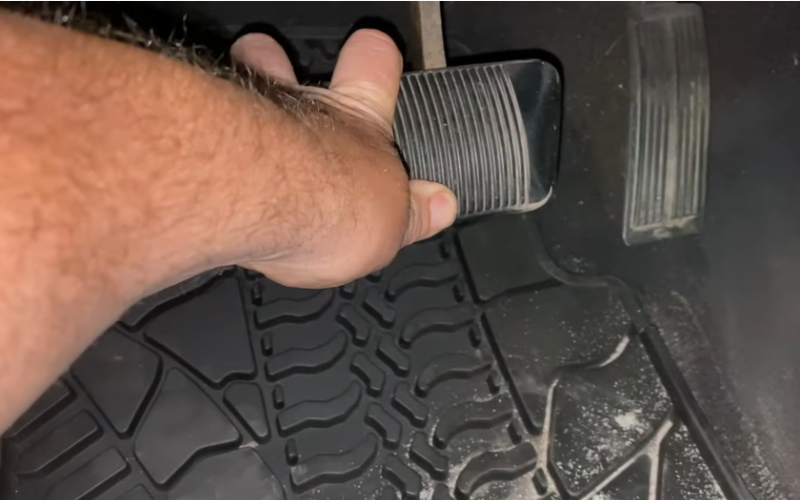
Spongy and less firm brakes are the common problems you notice when air is in the brake line.
Air quickly gets compressed and gives your brake pedal a soft touch feeling since you require less energy to compress air than the brake fluid.
Air affects the hydraulic pressure of the brake fluid, giving your brake pedals a smooth feeling when pressed.
2. Long Stoppage Distances
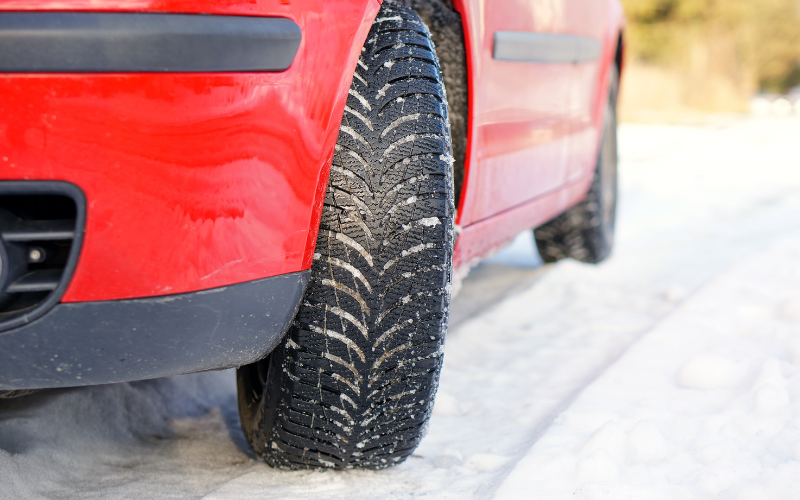
Brakes should bring the stoppage effect in time upon application, especially during an emergency. However, you may notice a delay in stopping indicating air in the brake lines.
Air gets compressed instead of transmitting the braking pressure from the pedal to the wheel first, increasing the stopping distances.
3. Inefficient Brakes
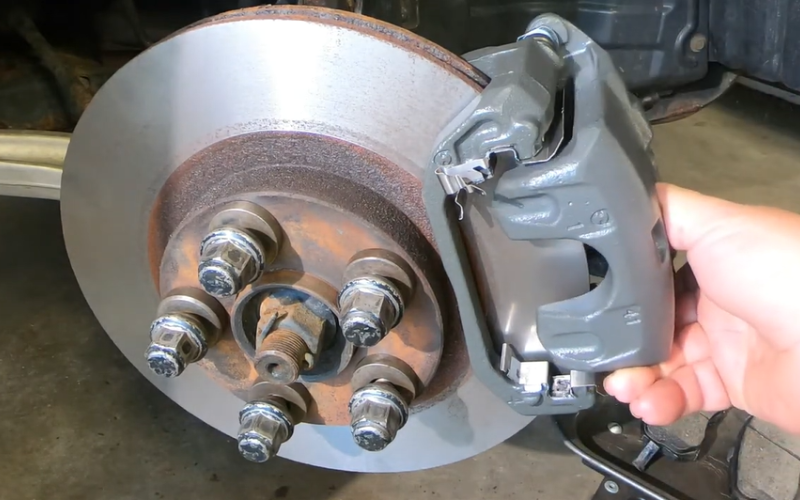
Brakes are meant to offer instant stoppage results when applied effectively. However, the air in brake lines reduces the efficiency of the brakes by reducing the hydraulic pressure in the system.
Depending on the amount of air in the system, the efficiency may drop to zero, posing a threat to road users as the brakes fail to function.
4. Reduced Brake Performance Quality
Well-maintained braking systems operate efficiently and don’t require a lot of pressure on the pedal to stop the vehicle.
When the air gets into the brake lines, it affects the expected performance. And you may be required to press the brake pedal fully with no results and pressure.
Air in the brake lines acts as impurities that alter the system’s functioning. If you experience reduced brake quality, check for air in the brake lines.
5. Brake Pedal Fails To Return To Rest Position On Release
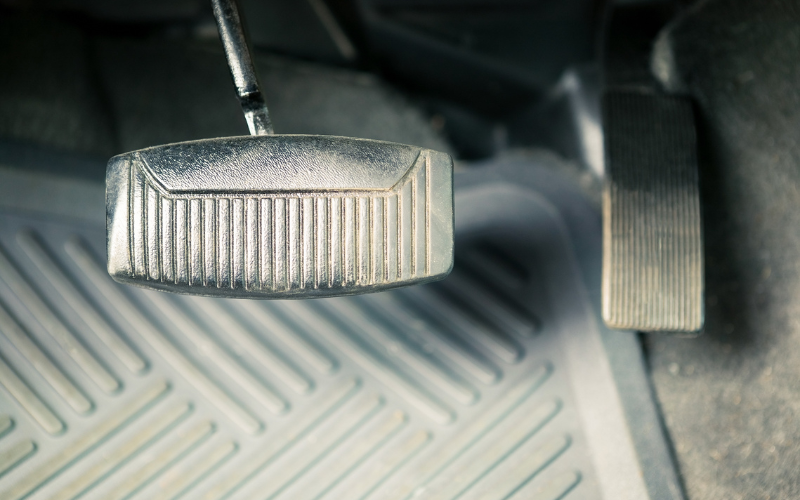
The brake pedal is meant to regain its original position of rest when released. If your brake pedal takes time to return to its resting position, check for possible air in the system.
Air in the brake lines causes the brakes to be sucked and take longer to return to their resting position since air doesn’t have sufficient pressure to thrust back the pistons.
6. Brake Fluid Leakages
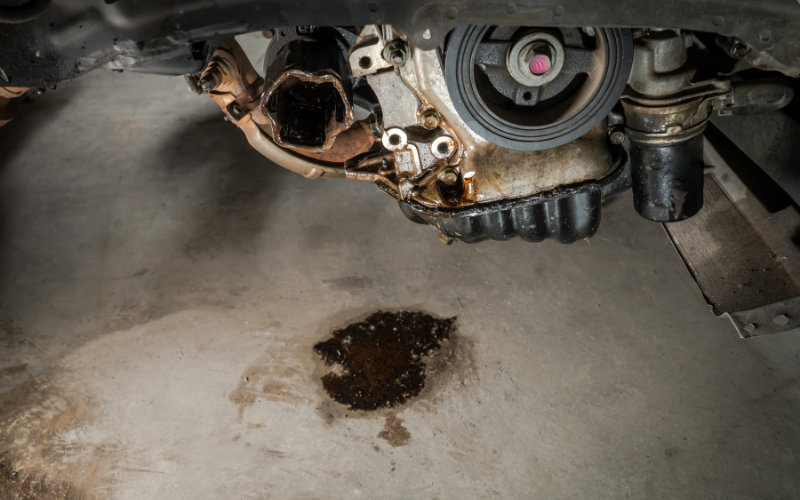
Braking systems are meant to operate with no air in them. When air enters the system, it causes corrosion of parts not in contact with the fluid.
Thus, continued rusting and corrosion under pressure cause the parts to wear and leak.
Even though it may take time, you will eventually note dirty brake fluid leakage.
7. Possible Bursting Of The Braking System
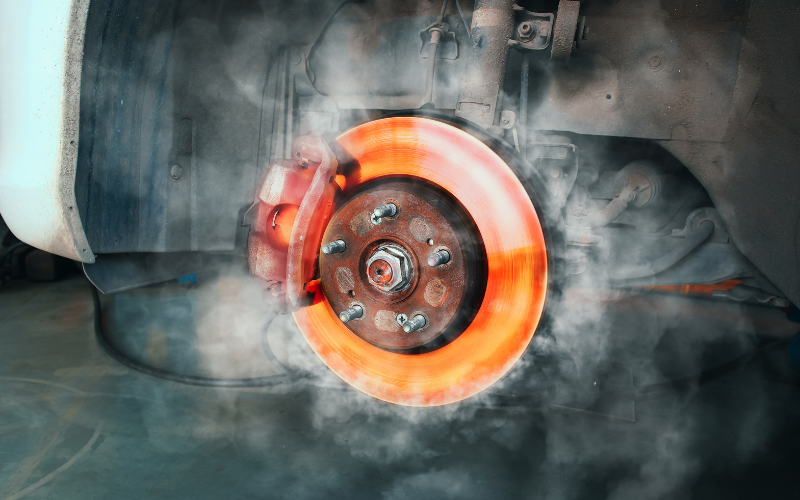
With constant air accumulation, friction builds up in the system. This causes the system to generate heat that results in the air and the brake fluid expanding inside the enclosed system.
In attempts to escape the system, the brake fluid and the air get the weakest points and force their way out, causing bursts, especially at the joints.
Troubleshooting & Fixing Air In The Brake Lines
Air in the brake lines affects the efficiency of the braking system. Therefore, it’s essential to remove air from the brake lines and address the issues that lead to air getting into the braking lines.
To achieve an air-free brake line system, carry out the following.
Replace Or Clean Any Damaged Parts Of The Braking System
Damaged parts of the braking system may lead to air being sucked into the brake lines, affecting the brake fluid’s hydraulic pressure. It’s, therefore, necessary to replace any broken or damaged parts.
To replace damaged brake lines, follow the steps below.
- Remove the cap, brake fluid reservoir, wheel and tires using a jack. Then remove the brake calipers, hoses by unscrewing them from their pistons.
- Allow the brake fluid to empty into a clean container for reuse
- Remove the clips and mounts holding the damaged brake line in place
- Remove the broken or damaged brake lines and dispose of them appropriately
- Carefully line the new brake line and hold them into place with mounting screws
- Replace the brake calipers and hoses by screwing them into position on their pistons
- Bleed the brake lines and refill them with new brake fluid
Also, clean the brake lines and eliminate any dirt and water that can cause air accumulation. Check the air valves, airlines, and brake fittings for any leakages.
Check air valves for leaks at the exhaust port.
Check the airlines for leaks and cracks at fittings and joints.
Check the brake fittings at the linkages for loose connections by applying pressure of up to 60 psi.
Inspect The Brake Fluid Level And Fill it if it Low
Low brake fluid creates space for air that may be sucked into the system during rapid braking moments. You should check the level and fill the reservoir if low.
If your brake fluid gets depleted fast, check for possible leakages along the system. Use quality brake fluid (our pick) to top up the reservoir.
Bleed The Brake Lines
The best way to eliminate air in brake lines is by bleeding. You can bleed using various methods such as;
The use of a vacuum bleeder involves attaching a vacuum pump to the bleeder screws. The pump is opened and the fluid is extracted from the brake lines as the air bubbles are eliminated.
The use of gravity is where the brake fluid is extracted from the brake lines via the brake valves through gravity as new brake fluid is added to the reservoir until air is removed.
Brake pedaling and holding where one bleeder screw is opened and then one person presses the brake pedal to pump air out of the line.
Reverse bleeding using an injector pump where brake fluid is pumped from the bleeding valve end towards the master cylinder as the air is allowed to escape from the top.
You should bleed the brake lines if your brake pedals feel spongy or take a long time to brake.
Frequent Vehicle Servicing
Some of the braking systems problems caused by air in the brake lines result from faulty vehicle parts due to frequent usage without proper servicing.
Servicing your car eliminates potential problems that would result in fatal issues. During servicing, have the wheels and braking system checked for abnormalities and replace faulty parts.
FAQs
Below are frequently asked questions regarding air in brake lines.
Why Is There Air In My Brake Lines?
Air can get into the brake lines in several ways, including a faulty system, insufficient braking, opening of the brake fluid reservoir, and instances when changing the wheels and their related parts.
Air may also result from the hygroscopic nature of the brake fluid that absorbs environmental moisture. The moisture is then acted upon by pressure-producing steam, resulting in air pockets.
Is It Possible To Prevent Air From Getting Into The Brake Lines?
Yes. You can prevent air from getting into the brake lines by practicing proper maintenance and using the correct type of brake fluid. Ensure all the entrances are airtight and any broken parts are replaced.
Conduct frequent servicing and bleeding to keep the lines air free.
Conclusion
Air in brake lines affects the hydraulic brake pressure efficiency and reduces braking performance. Unlike brake fluid, air can be compressed, causing a reduced pressure transfer from the brake pedal to the wheels. You therefore need to ensure proper care and maintenance on your brake system to reduce the air in the brake lines.
Once you detect any of the above-listed problems, consult a mechanic for appropriate action, such as bleeding, repair, or replacement of any damaged parts in the system. You can, however, repair or bleed your vehicle’s brake lines following the methods and steps listed above.

Meet Zayan, the mechanical genius behind the highly acclaimed brakes problems and solutions website. With over a decade of hands-on experience in the automotive industry, Zayan has become a trusted authority in the realm of brake systems.
His passion for cars, coupled with his expertise in solving complex brake-related issues, has earned him a devoted following of car enthusiasts, mechanics, and everyday drivers seeking reliable guidance.
